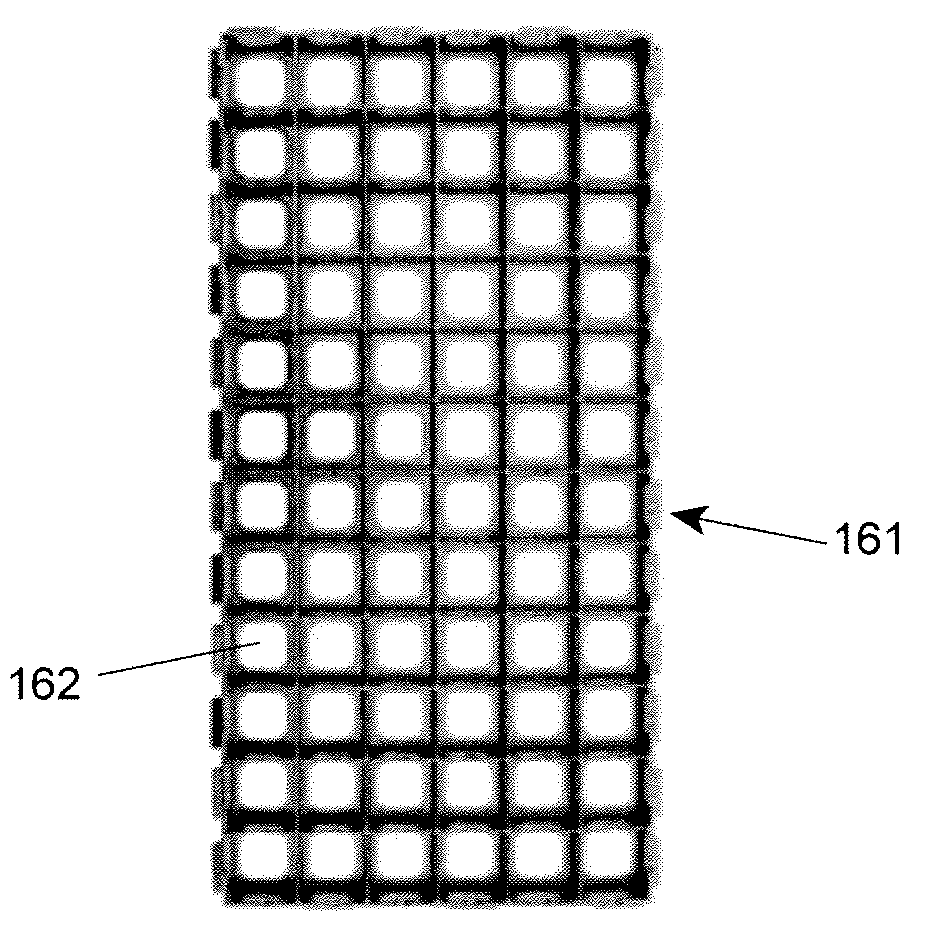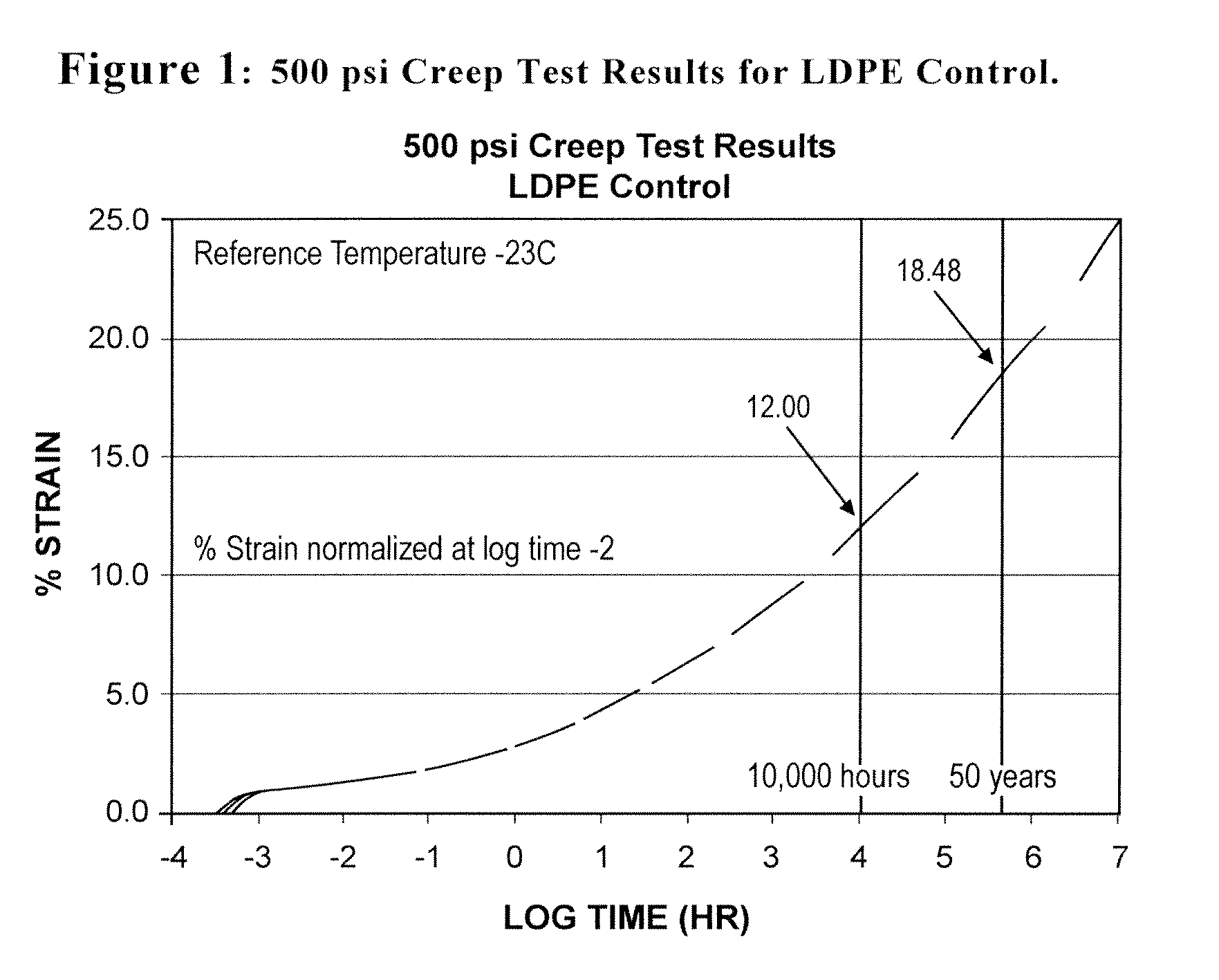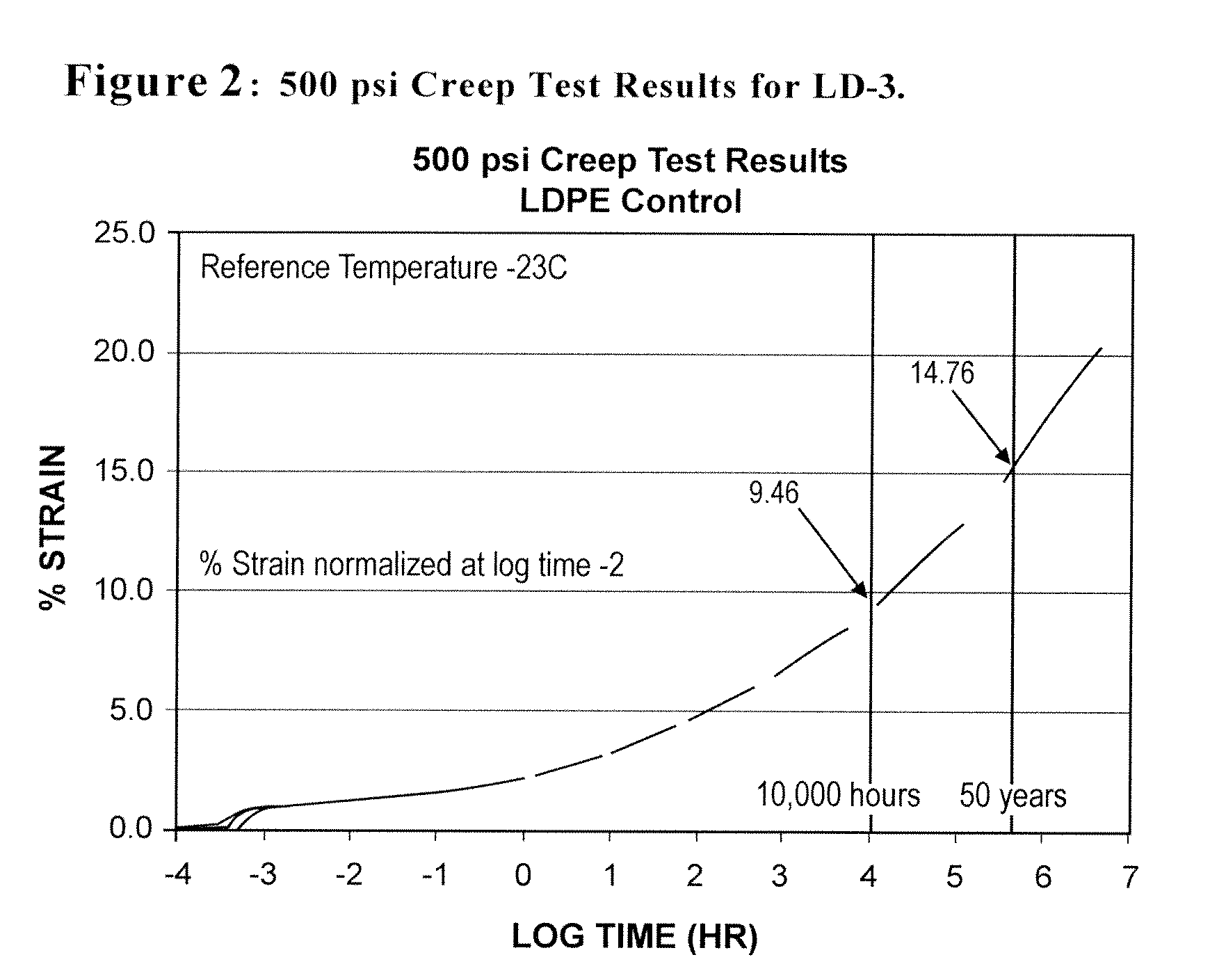Geotechnical applications of improved nanocomposites
a nanocomposites and nano-composites technology, applied in mining structures, transportation and packaging, layered products, etc., can solve the problems of increasing the potential for failure in the field, increasing the potential for collapse of hdpe storm water storage structures, and reducing the gas permeability. , the effect of improving the coefficient of linear expansion
- Summary
- Abstract
- Description
- Claims
- Application Information
AI Technical Summary
Benefits of technology
Problems solved by technology
Method used
Image
Examples
example 1
Low Density Polyethylene Nanocomposite Sheets
[0102]Low density polyethylene (LDPE) was processed into nanocomposite sheets. A masterbatch(nanoclay concentrate)-letdown approach was implemented to allow for the highest dispersion of nanoclay into LDPE.
[0103]As a first step, low density polyethylene was dry blended with a nanoclay masterbatch (e.g., nanoMax-LDPE (NANOCOR INC, Hoffman Estates Ill.), a 50 / 50 blend of a dimethyl dialkyl ammonium modified montmorillonite clay and LDPE with a maleic anhydride grafted polyethylene compatibilizer). The blended product was then compounded with a twin screw extruder to collect nanocomposite pellets. In a second step, the nanocomposite pellets were dried and extruded into sheet using twin screw extruder equipped with slot die. Nanocomposite sheets with 25 mm thickness were collected.
[0104]Compounding Parameters for Letdown of LDPE Nanocomposites: Leistritz 28 mm Twin Screw Extruder (L / D=40) with high shear screw design. Formulation was bag mixe...
example 2
High Density Nanocomposite Sheets
[0107]High density polyethylene (HDPE) was processed into nanocomposite sheets using the process presented in Example 1. All parameters were held constant, although the HDPE was blended with nanoMax-HDPE (NANOCOR INC.; a 50 / 50 blend of a dimethyl dialkyl ammonium modified montmorillonite clay and HDPE with a maleic anhydride grafted polyethylene compatibilizer). The samples prepared are listed in Table 3 and physical property testing data from standard ASTM test methods are included in Tables 4 and 5.
TABLE 3HDPE Extruded Sheet Samples.MB LoadingPE LoadingThicknessSample IDSample Description(%)(%)(mm)HD-CPure HDPE control010025HD-33% Nano in HDPE69425HD-66% Nano in HDPE128825HD-99% Nano in HDPE188225
TABLE 4Summary of Test Results of High Density Polyethylene Nanocomposites.HD-CHD-3HD-6HD-9Tensile Properties - from film (ASTM D 6693 - 2ipm strain rate)MD Yield Strength (psi)2227272728243299TD Yield Strength (psi)2316278131033283MD Break Strength (psi)4...
example 3
The Use of Recycled Plastics in Feed Stream in Producing Nanocomposites (6% Nanoclay Loading)
[0108]Polypropylene (PP) nanocomposites were prepared following procedure detailed in Example 1. The recycled PP nanocomposite was prepared by regrinding molded parts of PP nanocomposite. The compounding and molding steps in this example followed the same parameters as in Example 1.
[0109]Table 6 shows that addition of up to 30% recycled plastics in the feed stream has little effect in degrading the final properties. For virgin plastics without any nanoclay, addition of 30% recycled plastics would cause property degradation of 30-40%.
TABLE 6Addition of Recycled PP Nanocomposites (with 6 wt % of clay) into Feed Streamwt % ofFlx.Flx.Notchedwt % ofRecycledStrModChangeIzod (lbs-Sample IDFormulationNanoclaynano PP(kpsi)(kpsi)(%)ft / in)Re-C100% nano PP608.657331.60.81Re-1010% Recy6108.541327.7−1.20.62NanoPP + 90%nano PPRe-2020% Recy6208.497314.5−5.20.74NanoPP + 80%nano PPRe-3030% Recy6308.483317.3−4...
PUM
| Property | Measurement | Unit |
|---|---|---|
| Fraction | aaaaa | aaaaa |
| Fraction | aaaaa | aaaaa |
| Fraction | aaaaa | aaaaa |
Abstract
Description
Claims
Application Information
 Login to View More
Login to View More - R&D
- Intellectual Property
- Life Sciences
- Materials
- Tech Scout
- Unparalleled Data Quality
- Higher Quality Content
- 60% Fewer Hallucinations
Browse by: Latest US Patents, China's latest patents, Technical Efficacy Thesaurus, Application Domain, Technology Topic, Popular Technical Reports.
© 2025 PatSnap. All rights reserved.Legal|Privacy policy|Modern Slavery Act Transparency Statement|Sitemap|About US| Contact US: help@patsnap.com



